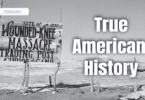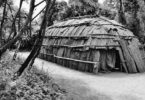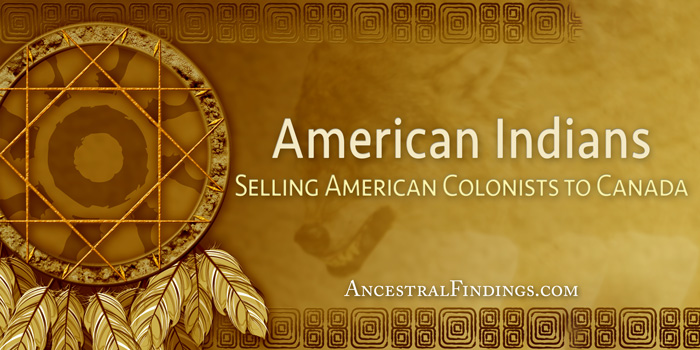The usefulness of tracing Cherokee ancestry using the Dawes Rolls is controversial among those who claim Cherokee descent. Some say the lists are invaluable and highly accurate in tracing these family lines, while others say many did not register with the Dawes Rolls because they did not trust them, and so the Cherokee ancestors of some people who claim it may not be found there. Both sides are passionate about their stance, and it is an ongoing debate. The debate itself will be left to those who are debating it, and not be discussed here. What will be discussed here are alternatives to the Dawes Rolls when it comes to tracing your real or supposed Cherokee ancestry.
The Dawes Rolls are very famous in Cherokee ancestry research. The US government organized the Dawes Commission in 1893 in order to force the so-called “Five Civilized Tribes” to agree to a plan of land allotment in exchange for doing away with the reservations for these tribes. The tribes included in the Dawes Commission’s project are Cherokee, Choctaw, Creek, Chickasaw, and Seminole.
Every member of these tribes had to be accounted for in order to allocate the communal land in a proper way. Freedmen (emancipated slaves who were owned by Native Americans prior to the Civil War) were also included on the Dawes Rolls. Because of the allotment of land involved, more than 250,000 people applied to be on the rolls. However, the Dawes Commission did its research and ended up qualifying only just over 100,000 people to be on the rolls and receive land.
Categories for joining the Dawes Rolls included:
- Native by blood, including newborns and minor children
- Native by marriage
- Freedmen (formerly owned by Natives or adopted into their tribes), including newborns and minor children
- Delaware Indians (Natives adopted by the Cherokee tribe, but registered with Dawes as a separate sub-tribe within the Cherokee tribe)
While Dawes can be useful in tracing Cherokee heritage, it is by no means the only source. Those who suspect they may have Cherokee ancestry, or who have always been told they did (but have no proof), can get a DNA test done at any of the commercial DNA companies to determine if they have Native American DNA, and what percentage. By connecting with other matches on these sites who also have Native American DNA, a family tree can often be pieced together, and the tribe of origin determined. It may actually be Cherokee. DNA doesn’t lie, and a mistake can’t be made on its paperwork, so it is an excellent way of determining if you have Native American DNA. You can work on determining the actual tribe from there.
If you have an ancestor who was rumored to have married a Cherokee, and you know that ancestor’s name, you can look for them in the US census records. Any record after 1880 will show ethnicity. Look at their spouse (usually a wife). Does it say Native American, Indian, or name an individual tribe? You have your answer right there, without even needing the Dawes. If you don’t know the ancestor’s name, but know the line in your family where a Cherokee supposedly married in, do regular genealogy research down that family line until you either find a Native American as a spouse, or take the line all the way back to Europe or another continent without finding a Native.
Both situations occurred in my family. One line was always rumored to have had a many times great grandfather who married a Cherokee woman. Research on that line all the way back to England showed no one who appeared to be Native, or who was listed as such. Later, DNA research showed not a drop of Native DNA in me. Then, deeper, more detailed research showed a man in that same family line, in the 1700’s, DID marry a half-Jewish woman (her father was a Jewish immigrant from The Netherlands). It is now supposed that is where the rumor of a Cherokee relative originated, with the half-Jewish woman.
You could do these things and discover you DO have Native DNA, or locate a Native in the paper trail in your family history, and that location does not have to be in the Dawes Rolls, especially if the Native DNA came into your line before the rolls were taken.
In addition, there are other Native American registry rolls besides the Dawes. The US government took rolls of the names of tribe members in 1817, 1835, 1851, 1876, 1880, 1894, 1896, and 1890. You can search these rolls at the National Archives in Washington, D.C., or request copies of rolls to be sent to you, and look for your ancestors there. You may even be able to trace them across more than one roll, and thus establish several generations of a Cherokee family.
Missionary records are another good place to look. Missionaries took it as their sacred duty to convert Cherokees and other Natives to Christianity, and they kept detailed records of the tribe members with whom they worked on conversion. These documents are usually from the early 1800’s but could be even earlier, as missionaries were coming here from Spain as early as the 1500’s. Look for records from the mission schools, as those are most likely to have been preserved as historical documents, and they have detailed information on children and families within the Native tribes. Keeping your search for mission schools in the east will give you a better chance of finding Cherokees in your family (or who could be).
Other sources include the federal government’s 1848 and 1851 Rolls of Eastern Cherokees, which are pretty good census records of Cherokees and other eastern Native tribes. There is also a list of 1600 Cherokees who the federal government slated for removal from their land on what became known as the Trail of Tears. You might find your ancestor there. When it comes to Native American genealogy, particularly Cherokee genealogy, the Dawes Rolls are not the be all and end-all of research. Not by a long way.






